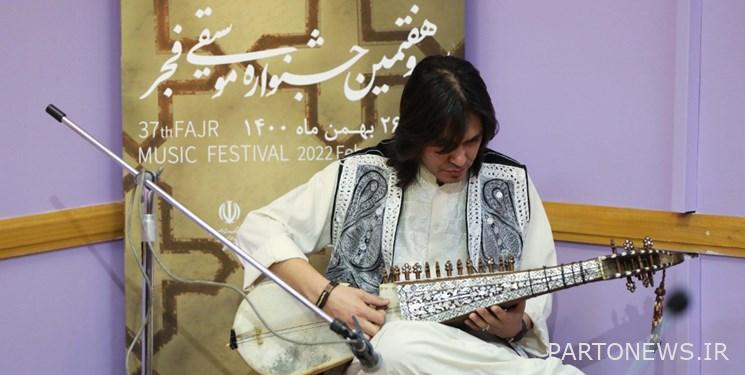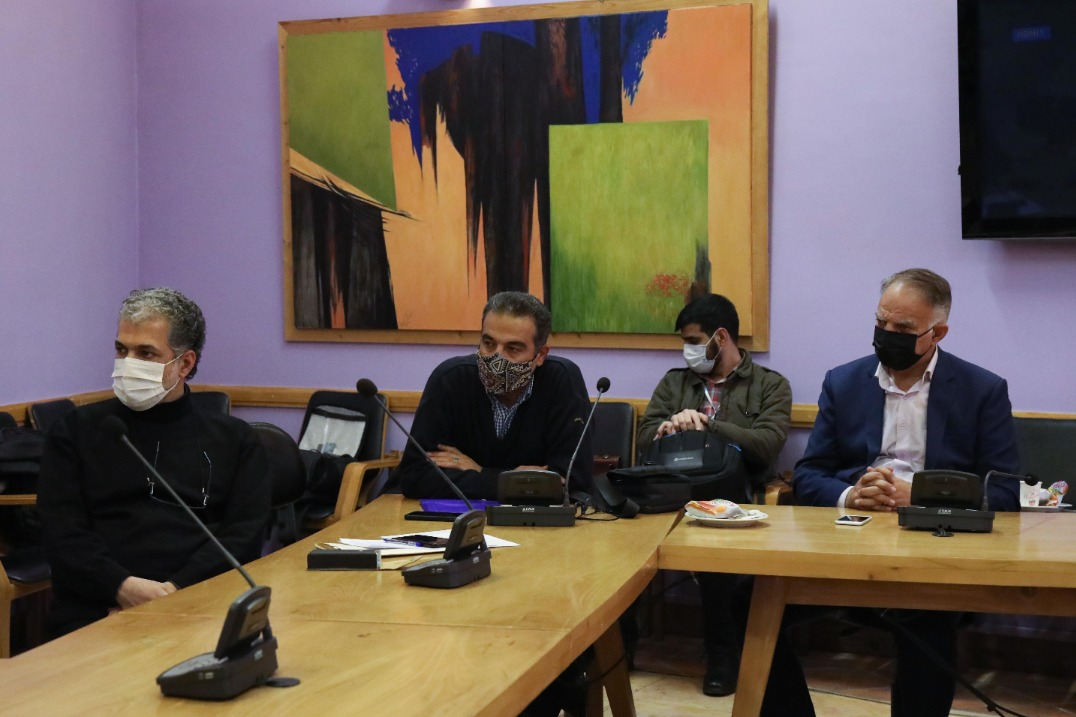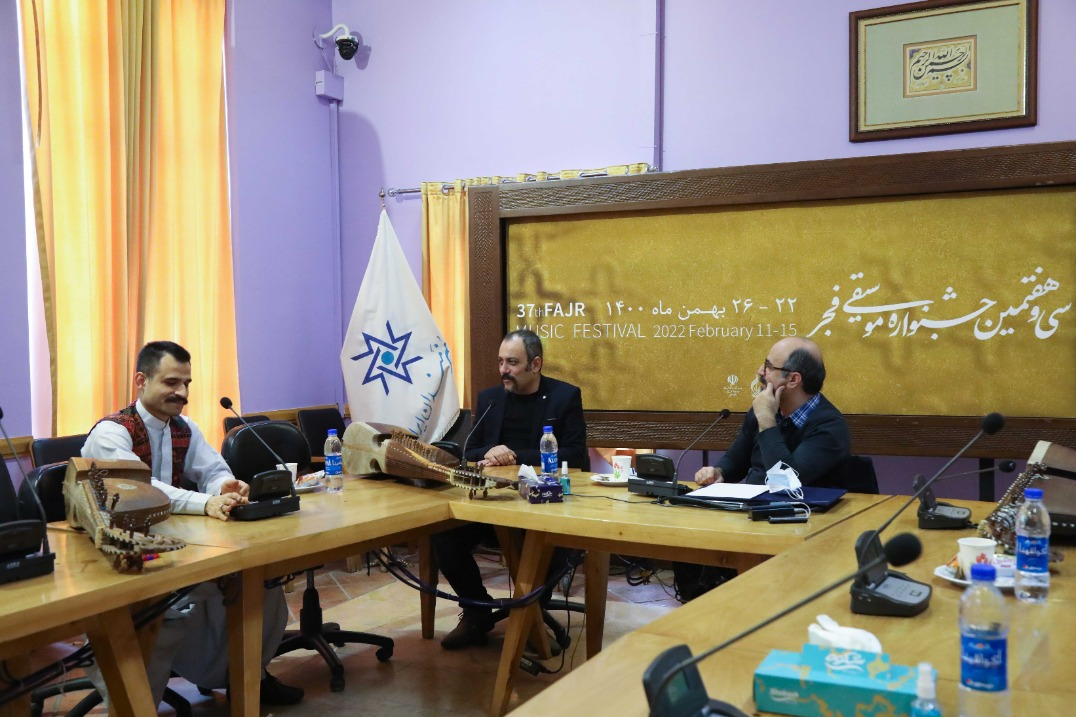Saz Rabab, the link between Iranian and Afghan culture

According to the music correspondent of Fars News Agency, the second program of the festival’s research sessions will be held on Saturday, February 14 in the Amirkhani Master Hall with the presence of Ali Tavakoli (Rabab musician), Farooq Rahmani (Rabab Baluchi musician) and محمدنسم خوشنواز (Afghan rabab player), Ahmad Sadri and Babak Khazraei, the secretary of this section, was held under the title “Rabab in Iranian and Afghan music”.
At the beginning of the meeting, Ali Tavakoli said: “The point that should be mentioned is that Rabab, like many instruments that disappeared during the Safavid era, has no specific image anywhere except the name, and no specific report can be found, at least in its center.” It is thought that the rabab is not an instrument but a series of names of a variety of instruments. Like Hafez’s poems, in which the instrument of Rabab and even before it, this Rabab is not meant, but a family of instruments. Just like the stringed instrument, which stands for a longer name: “Khorasanian two-stringed tambourine” or even the fiddle instrument, which refers to the whole story.
Regarding Rabab’s entry into the music of a wider instrument, he said: “At the beginning of the introduction of this instrument, there was a misconception about the ‘bass’, which is not specific to this instrument.” At that time, three sizes, large and small, are made of it. The first thing is to remove 15 strings from the rabab, which is from 7 to 10 strings واخون Designed or manipulated for this instrument. Initially, the musicians played the lute, tarnavaz, or oud, and did not specialize in playing the instrument. The percussion in Rabab is on the first finger and the string players did not know how to do this and put the second finger on it.Ned Or, instead of constantly tuning the rabab and its difficult control over age, they untied all the strings and lost part of its identity. He even replaced the plastic wires of the instrument with spring wires, leaving only the appearance and being deprived of identity.
Tavakoli added: “Master Ghanbari started working in the official music of Iran in the early 50’s, but only Rabab’s name shone and there was no news of its sound, which could even be suspected of being played.” Due to the lack of an independent character for the rabab, its soloism became popular, which, of course, can only be proven in two places; One, in the album «نوبانگ Kohan »Professor Alizadeh and another, a collection of rows published by Professor Roshanrovan, Tehrani, Shajarian, Zarif, etc., which was published in pages by the Center for the Intellectual Development of Children and Adolescents. The whole value of the rabab is to produce its harmonious atmosphere, and by removing it, nothing remains.
Regarding the addition of more curtains to the lute, the lute player said: “As long as the sound stamp is not removed, there is no problem, but raising the handle reduced the” chest “instrument (second bowl), which disturbed the fit and balance of the lute.
Rahmani further added about Rabab Baluchi and the musical realms of Baluchistan: As mentioned, Rabab is in fact one that is known in each region or by the name of individuals or regions. Rabab, the originalMost Is an instrument in eastern Balochistan or the border of Pakistan where only words can be more important than Rabab.Brought Which is used in the income of most instruments. Therefore, the word in playing Persian, Persian lyric poems and Baluchi dhikrs IncludesTake; In northern Balochistan, however, rabab is common in another form, which, of course, is the sound of rabab, the common music of Balochistan; Lyrics Amir Khosrow Dehlavi is one of the poems sung in Balochistan with Rabab.
Regarding the connection between Baluchi music and Indian subcontinent music, he said: “These musics are similar to each other, but there are many differences between them, and of course sometimes many musics.”دانان Like music دانان Traditions of other countries have taken the rhythm to other regions.
Rahmani by Abolghasem Hosseini Nejad, known as “Mawla Qasim”, who is a source for Balochistan lute players who specialize in lyric music Built And to the late gentlemen Moses Zindshahideceased گاجی He named Raisi and … as the masters of the Baluch rabbis.
also خوشنواز He acknowledged: In our region, the middle instrument is the most used. There are two schools of music in Herat, one of which is owned by a teacher خوشنوازMy father and another, مکب Master is Rabab. Rabab’s student, in order to become a master, holds a band to show that he is a student of Rabab’s master, which is also considered an Indian tradition. The Herat school has a special tone close to that of Iran.
Tavakoli continued: The method of performing and expressing the sound of Rabab in Afghanistan In most cases, except for classical music, it is closer to Persian, urban and instrumental music than its Baluchi music.
The Herati musician living in Mashhad said: “They know the device, but adding extra curtains to it is an initiative of Khorasan Iran.”
Tavakoli, referring to the repetition of Iranian music ensembles in terms of expression and tone and the possibility of creating a new tone with Rabab, said: First, another issue must be explained. Why have strings and dulcimers dominated instrumental music? Santour is a difficult instrument, but due to the existence of composers, this instrument has flourished a lot, and even the reed instrument, which is a traditional instrument, Rule Is no exception; Rabab also includes this issue because tarnavazans and … played many songs with mastery, but in Rabab, the thought of not appearing in this format of this instrument.

Ahmad Sadri, the special guest of this program, said in a part of the meeting: “Despite the present generation, I am by no means pessimistic about the progress of the Rabab instrument, and quite the opposite, I am optimistic because this instrument is going through a musical ascent. Is texts.
The music teacher continued: The question that has occurred to me here is whether there is a special name and title for musician Rabab in the Herat region? I ask this question because there are special letters in Baluchi music, which would be a very valuable work if all these letters were written.
خوشنواز In response to Sadri, he said: Yes, it has a special name. To the seventh, Mongolian, and to the sixteenth, {دادرِه} To The fourth {گِدِه} And to the classic 16-beat piece, {تِنتالِ۶ ۱۶ مُترِه Or eight {مطره} they say.
Following the meetings of the research section of the 37th Fajr Music Festival, on Sunday, February 15th, a meeting on “Preliminary knowledge of the components and structure of the Iraqi position” will be held in the presence of the meaning of jihad, Issa Zarei and Mohammad Zarrinmehr at the House of Iranian Artists in Amirkhani Hall.

end of Message/
You can edit this post
Suggest this for the front page

